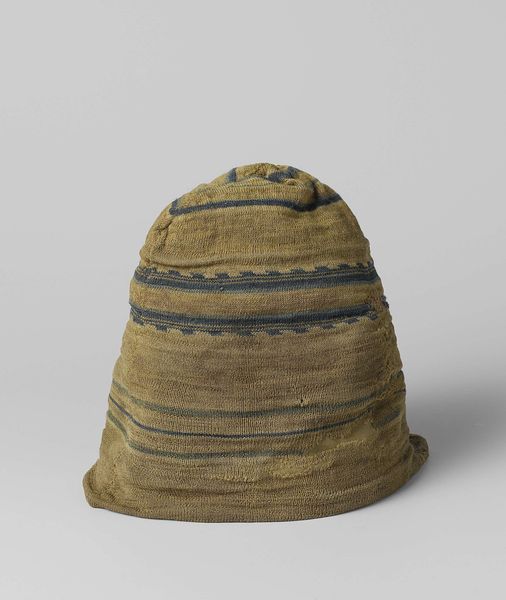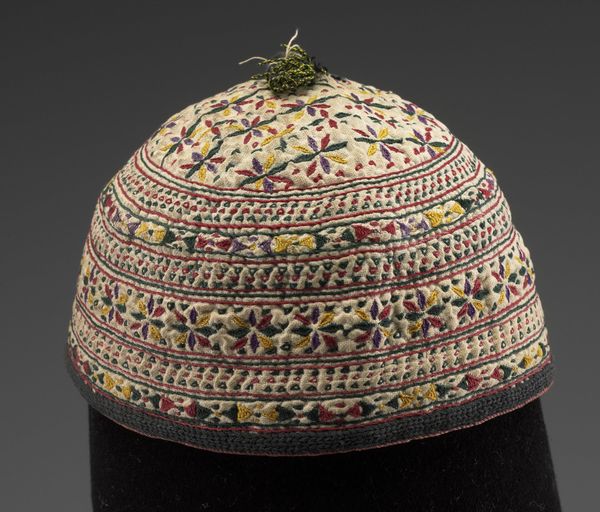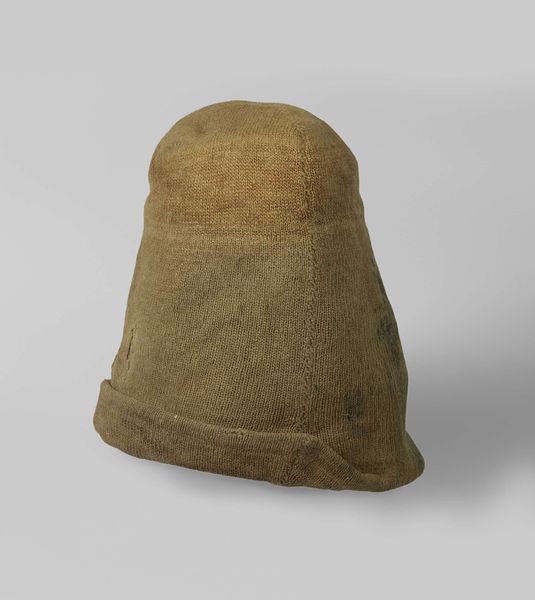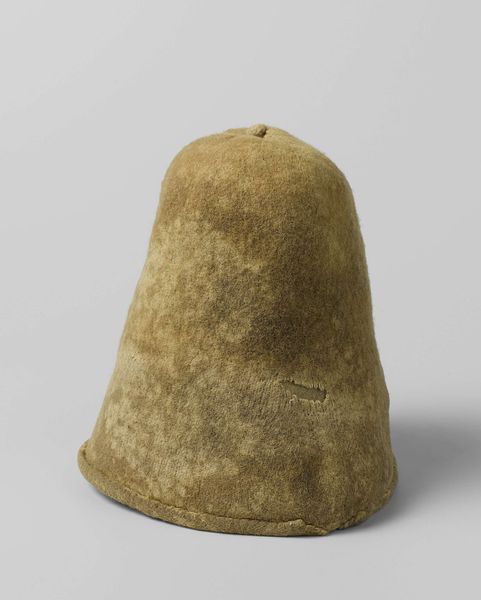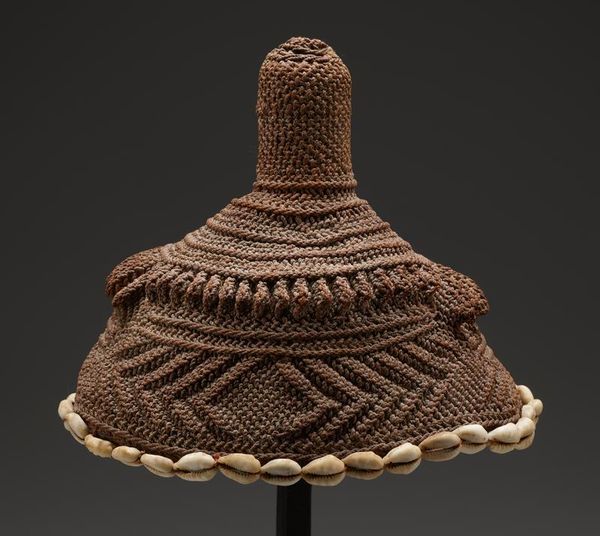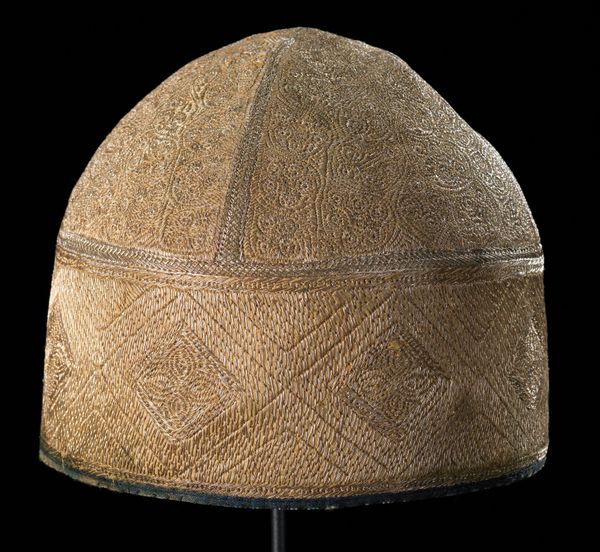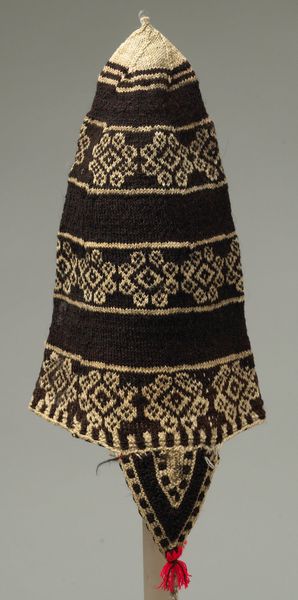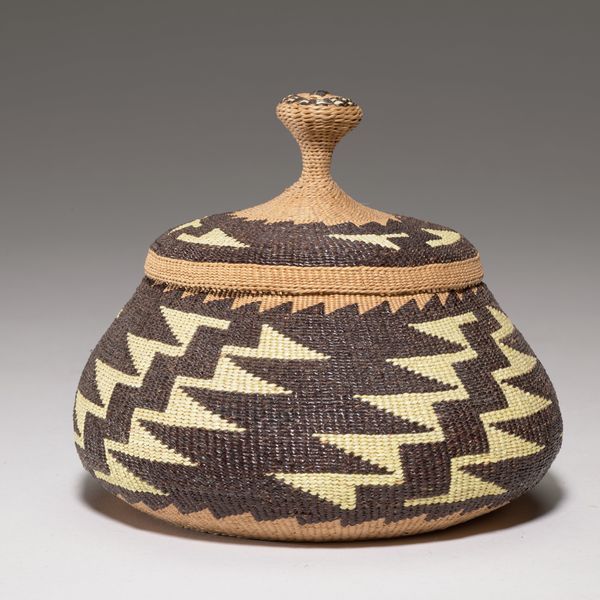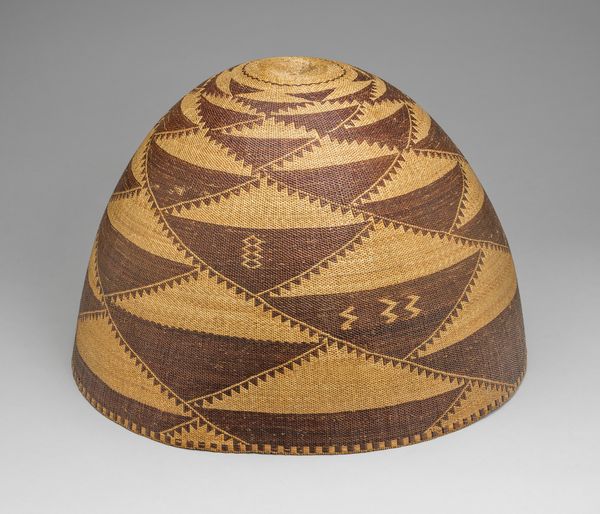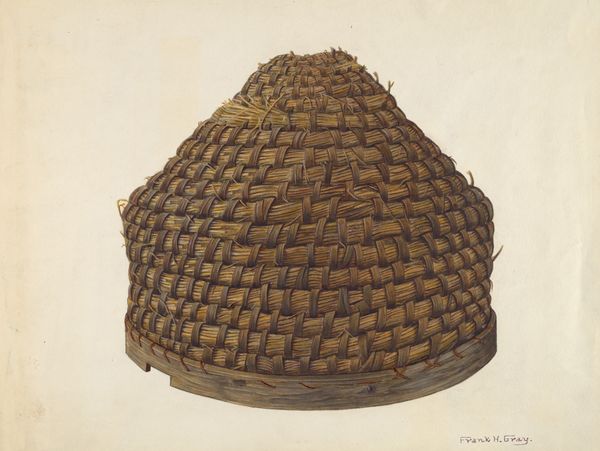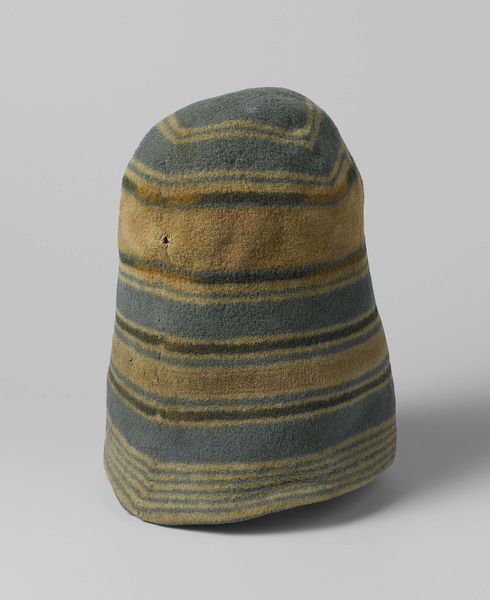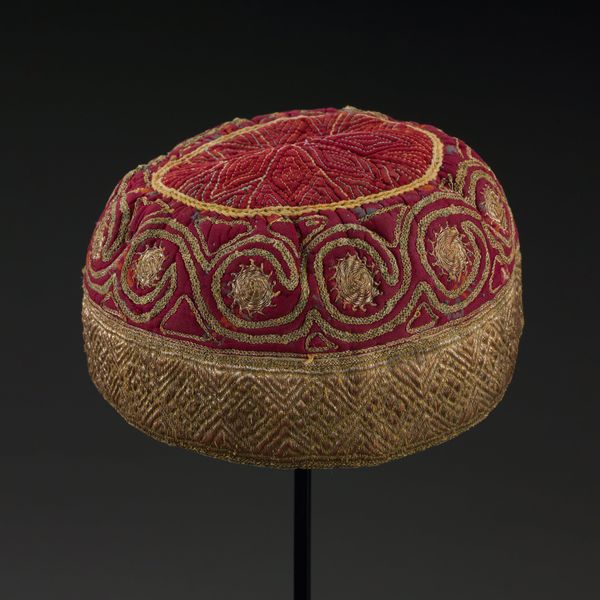
fibre-art, weaving, textile, cotton
#
african-art
#
fibre-art
#
organic
#
weaving
#
textile
#
form
#
stoneware
#
cotton
Dimensions: 8 × 8 × 8 in. (20.32 × 20.32 × 20.32 cm)
Copyright: No Known Copyright
Curator: Here we have a remarkable textile piece simply titled "Hat." While its exact date of creation remains unknown, its cultural significance within Kirdi communities is profound, and it currently resides here at the Minneapolis Institute of Art. Editor: My initial reaction is to the tactile nature of it. I’m imagining the hands that meticulously crafted each interwoven strand. The materiality is everything here – cotton, fibre, the obvious process of weaving itself… You can practically feel the labor embedded in its form. Curator: Absolutely. The hat serves not merely as apparel, but also as a reflection of the Kirdi peoples’ worldview, often representing status and social standing through the complexity of the weave and design. The communal act of textile production plays a role in maintaining and reproducing Kirdi social structures and values, no? Editor: Precisely! And beyond social structures, we should remember that access to raw materials – the cotton and fibres – speaks to trade routes and resource availability, influencing the means by which such elaborate objects could even be created. What’s fascinating is the translation of function into high art—elevating daily life through skillful manipulation of the raw materials at hand. Curator: It truly underscores how seemingly utilitarian objects can operate on symbolic levels. A Kirdi wearer embodies an individual connection to community history and identity through this “Hat”. The creation and the wearing is performance! And this resonates in modern museum culture, which plays a key role in preserving and presenting such culturally important pieces. Editor: I agree. The way this artifact prompts conversation—about labour, resources, identity, and ritual—reveals an unspoken material story embedded within, waiting for further investigation. Its form transcends function, revealing deeper roots than immediately apparent. Curator: Indeed, and by situating this seemingly simple object within broader cultural and social networks, we gain profound understanding not only of this beautiful hat, but of Kirdi people as well. Editor: Yes. To appreciate art is always to explore its deep foundations and inter-woven complexity.
Comments
No comments
Be the first to comment and join the conversation on the ultimate creative platform.
